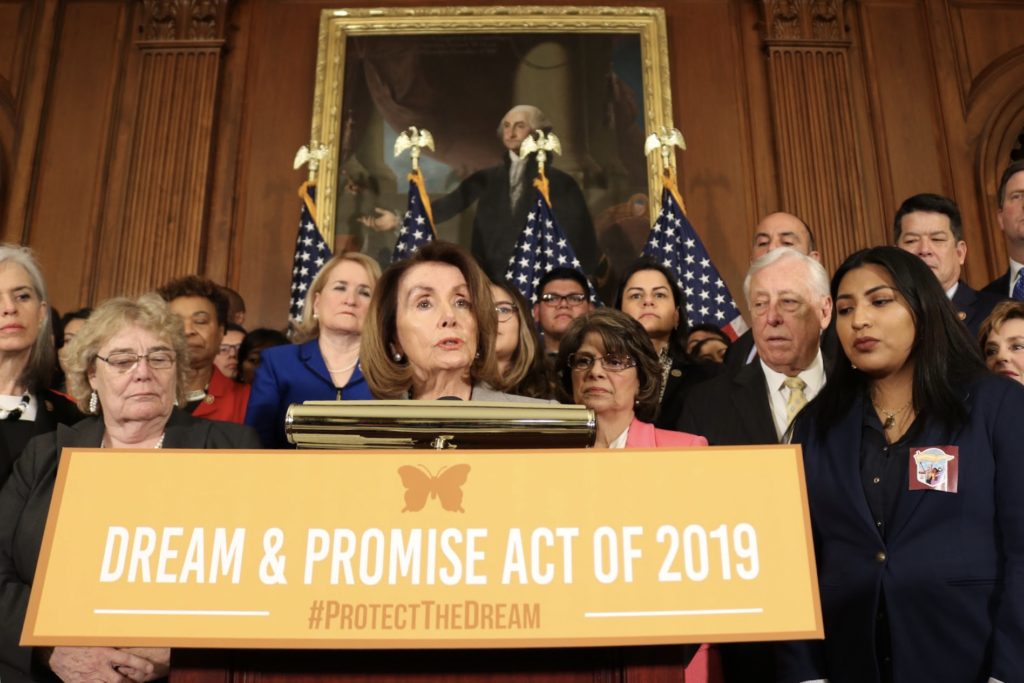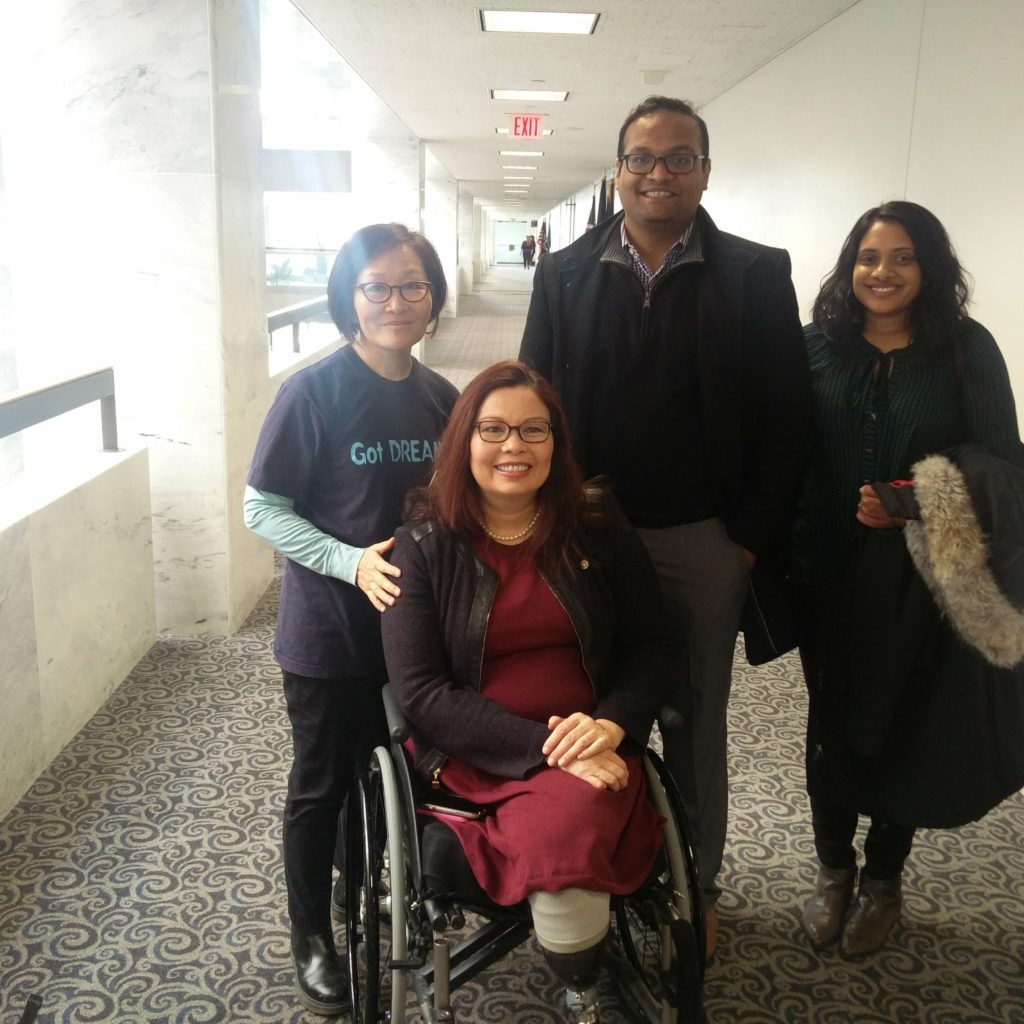937 people reached on Lassi with Lavina FB page – 45 engagements
New Hope for Young Indian Dreamers in America:
The House Passes the American Dream and Promise Act of 2019

[dropcap]W[/dropcap][ho can forget Gurupreet Kaur, the six-year-old Indian girl who was found dead of heatstroke in a remote, blazing hot Arizona desert, as she was trying to make her way to America via the US-Mexico border with her mother and four other Indian nationals?
Indeed, children have no say as to how they are brought to a country and how the struggle to improve their lives may become the heart-breaking ending of not only their dreams but of life itself.Indeed, children have no say as to how they are brought to a country and how the struggle to improve their lives may become the heart-breaking ending of not only their dreams but of life itself.
While this story had a tragic ending, there are thousands more young Indians who are already in the country illegally and their stories may have happier endings, thanks to the American Dream and Promise Act of 2019 just passed by the US House of Representatives.
On March 12, 2019, Democrats in the U.S. House of Representatives led by Reps. Lucille Roybal-Allard (CA-40), Nydia Velázquez (NY-07), and Yvette Clarke (NY-09) announced the introduction of the American Dream and Promise Act (ADPA). It was to safeguard children who were brought into the country as minors that President Barrack Obama had created the Dream Act. This was subsequently repealed by President Donald Trump.
For the past two years these dreamers have been living in limbo, suspended between hope and fear, not knowing what their futures hold. For those who think that Indians were a rarefied breed who do not fall within these shadow demographics, there are thousands and thousands of Indians who live in this twilight zone, and at least 7000 children who will be affected by this ruling.
Lakshmi Sridaran, Interim Co-Executive Director of South Asian Americans Leading Together (SAALT), a national advocacy organization, notes that as of August 2018, there were approximately 2,550 active Indian, 1,300 active Pakistani, and 470 Bangladeshi, 120 Sri Lankan, and 60 Nepali DACA recipients. There are at least 20,000 DACA eligible Indians and countless more South Asians who have not stepped forward.
Says Sridaran: “To our knowledge most Indian children either on DACA or eligible for DACA did not come to the U.S. on their own, but are part of mixed status families, where other members of the family may have overstayed their visas. Overall, nearly 250,000 Indians overstayed their visas in 2016.”

There has been a lot of excitement about the bill amongst the undocumented as so many will get a chance to move on with their lives. As the Washington Post noted: “The vote was 237 to 187 for the American Dream and Promise Act of 2019, which would grant dreamers 10 years of legal residence status if they meet certain requirements. They would then receive permanent green cards after completing at least two years of higher education or military service, or after working for three years.
Cheers erupted in the chamber when the bill received the necessary votes, along with chants of “Yes we can!” Seven Republicans broke ranks to join all 230 Democrats present in backing the bill.”
Indeed, the bill itself would offer a pathway to citizenship for over two million people with no added immigration enforcement measures. It will have a direct impact on the lives of people who came to the U.S. as children – Deferred Action for Childhood Arrivals (DACA) recipients, as well as people who came to the U.S. because their countries were ravaged by war, disaster, or U.S. intervention – those with Temporary Protected Status (TPS) and Deferred Enforced Departure (DED).
Sridaran of SAALT said, “The Dream and Promise Act passed the House without additional anti-immigrant concessions. This is the first step in bringing an end to this administration’s racist and xenophobic policies and laying a foundation for immigrant justice in federal policy.”

Chirayu Patel knows how important the Dream and Promise Act is: he was only 11 when he came to America from Ahmedabad and has lived for the past 20 years in the shadows. He recalls: “My family came here to Chicago on a visa and through family friends encouragement we applied through an “attorney” that would allow us to become permanent residents. Initially, my father received a work permit and we thought we were on the right track. Later we would learn that he wasn’t an attorney and filed incorrectly through a program that wasn’t a solution. There were many thousands of individuals affected in a similar matter.”
Patel had to grow up over night when he realized his life as an undocumented person came with a lot of hurdles: “It really hit me during high school when it came time to apply for college. I was unable to take many scholarships and other opportunities due to my status.” The introduction of DACA in 2012 made it easier to plan a career and carve out a future, and get stable employment. Trump’s decision to rescind DACA, recalls Patel, was like “a punch in the gut and I felt the floor disappear under my feet.”
As a dreamer, Patel is a co-founder of the DACA Network and has met with House Speaker Nancy Pelosi and done advocacy work along with other Dreamers. He works as an assets manager but always has his eyes on the political scene.
He points out that The American Dream and Promise Act would primarily help the DACA population, roughly about 2 million out of 11 million undocumented population in the United States. The Indian-American undocumented is estimated between 500-550K. Estimates of Indian American DACA population has ranged from 20-30K, while official DHS figures show that only about 5000 have taken advantage of it. Says Patel, “This is due to multiple reasons but some common ones are lack of awareness, the government use of data to track down and deport in the future, or to deport family members, and the high cost of application & legal fees. It costs me about $1500 every two years for the DACA renewal process.”
On the 7th anniversary of DACA, House speaker Nancy Pelosi said, “Our Dreamers are American in every way but on paper. Yet, by cruelly ending DACA, the Trump Administration brought fear and uncertainty into the lives of countless Dreamers. House Democrats are honoring our promise, and their bravery, by ensuring Dreamers can continue to bless our nation.”
Yet what does the future hold? Will the Senate give its blessings and make this into law? As the Marshall Project noted: “The bill has little chance of making it through the Republican-controlled Senate, given that Majority Leader Mitch McConnell of Kentucky has called himself the ‘grim reaper’ of Democratic legislation.”
Chirayu Patel, a Dreamer but a realistic one, says: “I am not optimistic that it will pass in the Senate. However, I am glad that it passed the House. As someone that has been working on this for over 10 years now, I see it as points on the board and most importantly it is a test of power and promise of immigrant communities, including the larger Indian-American community. But I also understand the current reality, and know that it won’t happen until we keep pushing at all levers of power – local, state, and nationally.”
Related Articles:

Indian-Americans Players in the Midterm Elections

Indian Americans Lobby Washington
